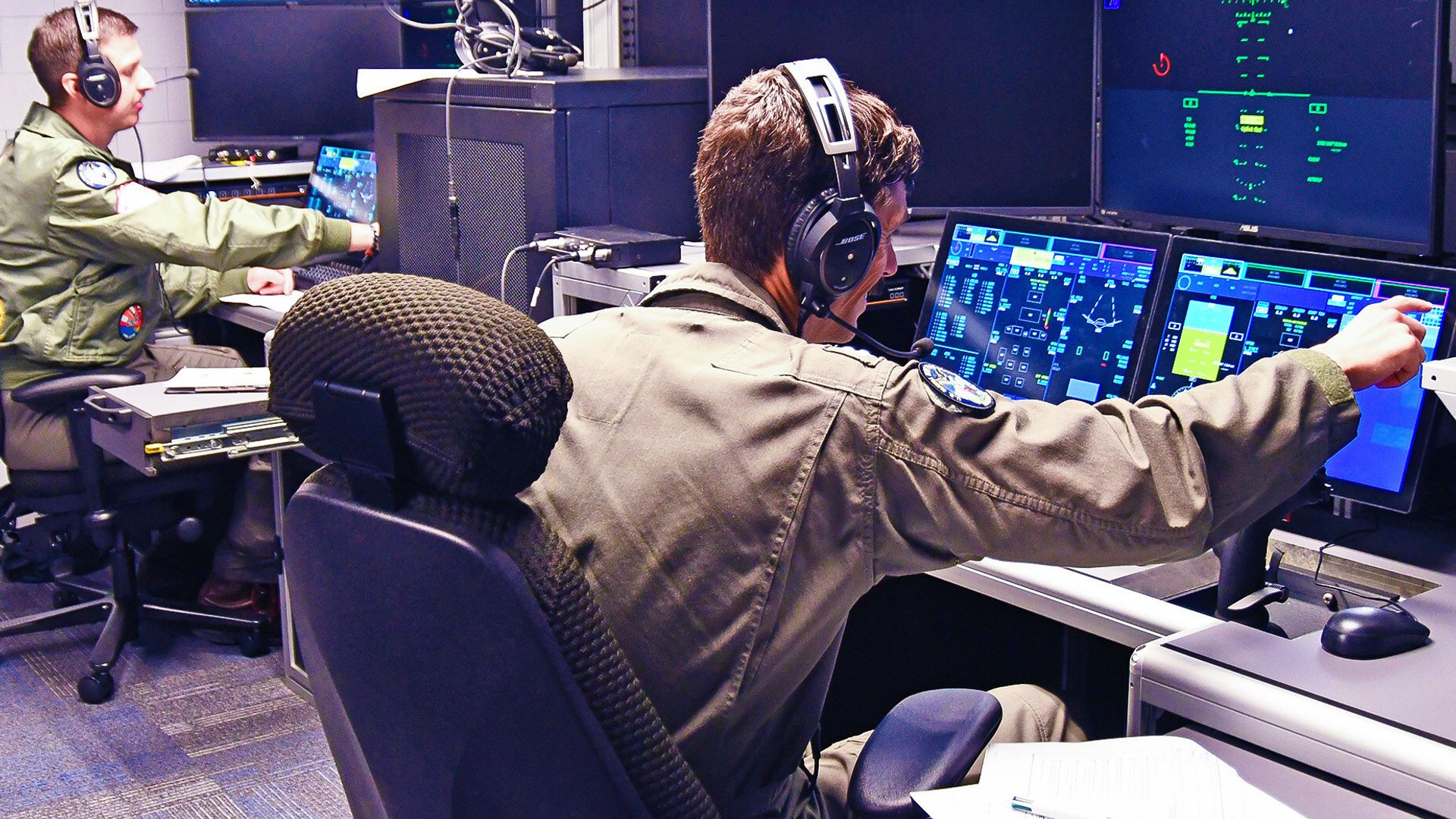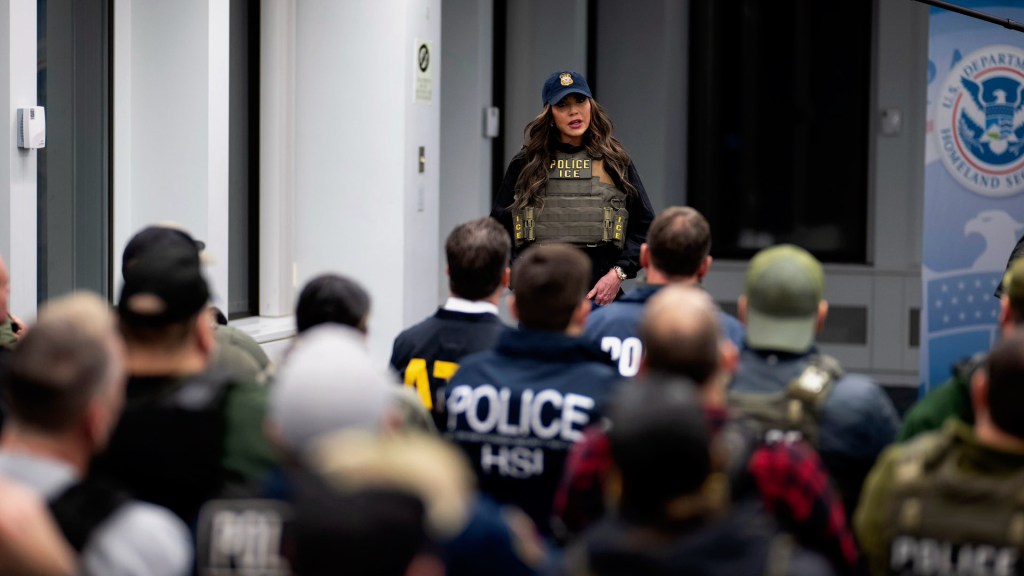
THE UNITED STATES NAVY JUST TOOK ANOTHER MAJOR STEP FORWARD ON ITS PATH TO PAIR UNMANNED AIRCRAFT WITH PILOTED PLANES.
IN EARLY NOVEMBER, NAVY AIR VEHICLE PILOTS STATIONED IN MARYLAND WERE ABLE TO LAUNCH AND FLY AN MQ-20 AVENGER THAT WAS ON THE OTHER SIDE OF THE COUNTRY IN CALIFORNIA. THE DEMONSTRATION PROVED THE NAVY’S UNMANNED CARRIER AVIATION MISSION CONTROL STATION, OR UMCS, WAS ALL BUT READY FOR ACTION.
THE BACKBONE OF THE UMCS IS LOCKHEED MARTIN SKUNK WORKS’ MDCX, OR MULTI-DOMAIN COMBAT SYSTEM. LOCKHEED SAYS THE MDCX PROVIDES UNCREWED VEHICLE AUTONOMY, MISSION PLANNING, AND COMMAND AND CONTROL CAPABILITY IN A PROVEN, SECURE PACKAGE.
FOR THE NOVEMBER DEMO, THE MDCX TALKED TO THE AVENGER THROUGH A PROLIFERATED LOW-EARTH ORBIT SATELLITE NETWORK. BASICALLY A WHOLE BUNCH OF SMALL SATELLITES WORKING TOGETHER SO EVEN IF ONE OR TWO, OR A HANDFUL, GO DOWN THE MISSION CAN CONTINUE.
THE MQ-20 AVENGER USED IN THE DEMO IS BUILT BY GENERAL ATOMICS AERONAUTICAL SYSTEMS INCORPORATED. IT’S WIDELY USED AS A TESTING PLATFORM FOR ANY NUMBER OF NEW TECHNOLOGIES THE NAVY OR OTHER SERVICE BRANCHES MIGHT WANT TO PUT ON FUTURE UNMANNED AERIAL SYSTEMS. THE AVENGER WAS STANDING IN FOR THE MQ-25 STINGRAY .
SCHEDULED TO BE OPERATIONAL IN 2026, THE STINGRAY WILL BE THE WORLD’S FIRST CARRIER-BASED UNMANNED AIRCRAFT. IT WILL START FLYING MISSIONS FOR THE NAVY AS AN AERIAL REFUELER, FREEING UP SOME NAVY FIGHTERS THAT HAD BEEN FULFILLING THE ROLE. BUT THE STINGRAY COULD ALSO BE KITTED OUT WITH INTELLIGENCE, SURVEILLANCE AND RECONAISSANCE EQUIPMENT AND EVENTUALLY, IT COULD CARRY MUNITIONS AS WELL.
WE’VE TALKED ABOUT THE STINGRAY A FEW TIMES ON OUR SHOW, WEAPONS AND WARFARE, SO BE SURE TO CHECK THAT OUT FOR MORE.
SUFFICE IT TO SAY, THE NAVY HAS BIG PLANS FOR THE STINGRAY AND OTHER COLLABORATIVE COMBAT AIRCRAFT STILL IN DEVELOPMENT, BUT NONE OF THOSE PLANS WILL BE POSSIBLE WITHOUT FIRST PROVING OUT THE GROUND LEVEL CONCEPTS. WHICH IS WHAT MAKES TESTS LIKE THE NOVEMBER FLIGHT DEMONSTRATION SO IMPORTANT.
BECAUSE AS THE RUSSIANS FOUND OUT IN UKRAINE, IT DOESN’T MATTER HOW COOL THE DRONE IS IF YOU CAN’T CONTROL IT.
ONE OF THE PILOT’S IN THE NAVY’S UNMANNED CARRIER AVIATION PROGRAM, Lt. STEVEN WILSTER, SAID NOT ONLY WAS IT GREAT TO BE A PART OF HISTORY
BUT THAT EVERYONE INVOLVED IN THE DEMONSTRATION “IS PAVING THE WAY FOR INTEGRATING CRITICAL UNMANNED CAPABILITY ACROSS THE JOINT FORCE TO COMBAT THE HIGH-END THREAT OUR WARFIGHTERS FACE TODAY AND IN THE FUTURE.”
FOR STRAIGHT ARROW NEWS, I’M RYAN ROBERTSON. FOR MORE OF OUR UNBIASED, STRAIGHT FACT REPORTING ABOUT THE NAVY, AND THE EFFORT TO DEVELOP COLLABORATIVE COMBAT AIRCRAFT, CHECK OUT SAN.COM OR DOWNLOAD THE STRAIGHT ARROW NEWS APP.











